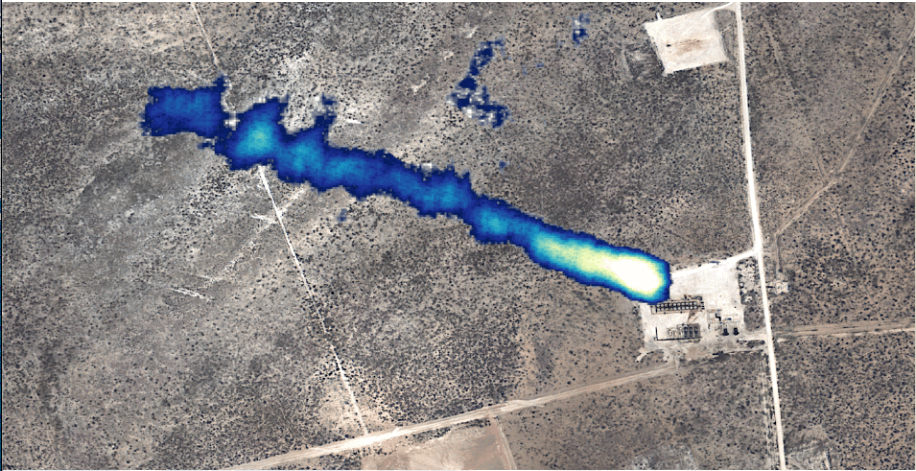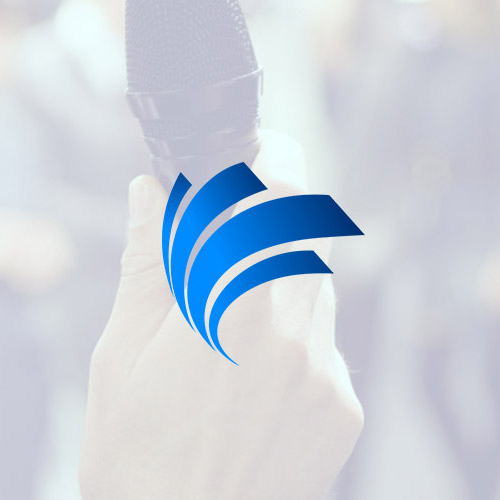Energy Dialogues Interviews Steve Deiker, Co-Founder and CEO of Kairos Aerospace
As the inaugural Permian Energy Dialogues approaches, Steve Deiker, Co-Founder and CEO of Kairos Aerospace, spoke to Energy Dialogues to discuss methane emissions, flaring, environmental challenges and more. Steve will be joining a panel at this year’s Permian Energy Dialogues from August 31 to September 2 in Midland, Texas to share additional insights.
We are pleased to share our recent conversation with Steve Deiker.
ED: We are delighted to have Kairos Aerospace join the dialogue at the inaugural Permian Energy Dialogues in Midland this September. For those not familiar with the company, can you please share with us the Kairos Aerospace story and your focus?
SD: Kairos Aerospace is a venture-funded company based in Mountain View, CA. Kairos was founded in 2013 by myself and Brian Jones, a fellow Ph.D. physicist who I met while working at Lockheed Martin. We were motivated to find solutions to global challenges, and ultimately settled on methane emissions. In looking at the nature and distribution of methane emissions, it was clear to us that quickly identifying the largest sources of methane emissions could have an enormous impact.
Over the course of a few years, Brian and I developed the patented technology that would eventually form the basis of all Kairos products. Kairos technology has since been deployed across the US and Canada for over a dozen oil and gas companies. Since its launch, the company has surveyed over five million acres of oil and gas infrastructure in eight U.S. states and one Canadian province. Together, Kairos and our customers worked to eliminate 3.9 billion cubic feet of methane emissions in 2019 alone. That’s the equivalent of eliminating emissions from over 425,000 vehicles.
ED: The word Kairos is an ancient Greek word that signifies “critical moment”. In your opinion, is the energy industry facing a critical moment? If so, what are the main challenges? How does Kairos Aerospace play a role in identifying solutions?
SD: We are at a turning point on many foundationally important issues to the energy industry, including methane. A decade ago, seemingly very few were paying attention to the air quality world outside of traditional ozone issues. Five years ago, it appeared to be a problem in certain isolated places like California and Colorado that wouldn’t make its way to the heart of oil country. Now, we’re seeing major oil and gas operators make sweeping promises—from net zero emission goals, to support for stronger methane regulations, to increased transparency and voluntary emission reduction strategies. It’s no coincidence that BlackRock’s 2020 letter to CEOs threw down the gauntlet saying, “Given the groundwork we have already laid engaging on disclosure, and the growing investment risks surrounding sustainability, we will be increasingly disposed to vote against management and board directors when companies are not making sufficient progress on sustainability-related disclosures and the business practices and plans underlying them.”
Companies are being challenged to do more to reduce emissions, and many have embraced the challenge with open arms. It bears repeating—Kairos customers last year eliminated 3.9 billion cubic feet of methane emissions. Our data provides actionable information that translates into dramatic emission reductions now. This is not some long-term scientific study, this is not some promising bench-scale impact being modeled, this is boots on the ground getting it done today. Kairos is honored to be a part of the energy industry’s transformation.
ED: Can you share a success story about how Kairos technology has unlocked value for one of its customers?
SD: Enabling the success of our customers is one of the most exciting parts of what we do. One Kairos customer is a leading Permian Basin operator with a track record of best-in-class financial performance. Several years ago, shareholders pressured the company to disclose more on environmental performance. Management responded by committing to inspect all facilities and reduce leaks. It was an ambitious target, and the path to meeting it was uncertain. That’s because reducing emissions from 10,000 facilities is remarkably difficult and labor-intensive. Budgets were constrained and hiring enough inspection crews wasn’t feasible, so they needed a way to inspect all facilities and identify the most important leaks as efficiently as possible.
The strategy they settled on relied on fast aerial screening with surgical ground follow-up. Fortunately, Kairos approach perfectly aligned with their new strategy. They tested their new strategy with a Kairos pilot project: 62 square miles and 170 tank batteries in 2 days. After the successful pilot, we pivoted to full-field surveys: 1,300 square miles and 10,000 facilities each year. The results of the program were terrific. Our customer reduced its emissions by >40% while also improving safety and efficiency by saving over 2,500 work hours and 1,100 driving hours per survey. Today, our customer maintains its top-tier lease operating expenses and status as a highly regarded Permian operator. Their CEO even highlights the results of their voluntary emission reduction program on quarterly earnings calls, annual reports. Their emission management program has been a ringing success, and we’re proud of the part we’ve played.
ED: Having recently completed a scan of the New Mexico portion of the Permian, covering 10,859 square miles, and collected methane imagery of a vast amount of oil and gas facilities, what were the main findings? What is the impact of these findings?
SD: To summarize our findings, the 80/20 rule is alive and well in New Mexico. After surveying more than 30,000 active wells and 10,000 miles of pipelines, we confirmed that a relatively small number of sites are responsible for the bulk of the basin’s emissions. There’s some good news and bad news in that. The bad news is that approximately 1,056 emission sources detected by Kairos are emitting significant methane. But the good news is that the vast majority of sites, more than 90% of sites in fact, do not appear to be contributing significant emissions. That’s really exciting because it means by addressing a relative handful of sites will reduce basin-level emissions in New Mexico by 75% or more.
The other surprising finding to us it the importance that gas gathering systems play in the total emissions picture. I think everyone is aware of the potential for emissions from upstream production sites, but the networks of rural gas gathering pipelines haven’t been easy to measure before our technology entered widespread use. For example, gas gathering systems may be responsible for about a third of the methane emissions in southeast New Mexico. Emissions from these sources have been difficult to measure, since they’re often buried and crisscross thousands of miles of land. Before technology like what Kairos uses became available, gathering line leak detection involved the arduous process of walking or driving by ATV across every mile of pipeline. Now Kairos can eliminate months of work in a single day of flying.
ED: What has been the overall response from the energy industry to the technology Kairos provides? What companies have you already collaborated with? Where do you see future opportunities? Where are you currently active and where are you looking to expand?
SD: It’s only March and 2020 is already Kairos’ best year ever. We guard our customers’ privacy closely but we’re excited to have more than a dozen companies on our list of customers. This year, we’re hoping to eliminate 10 billion cubic feet of methane emissions. None of it would be possible without our dedicated industry partners. We started off doing a single large survey in the Midland Basin in 2018. In 2019, we added all of the Delaware Basin in New Mexico, which roughly tripled the number of facilities we covered. In 2020, we’re stepping it up even bigger. We’ll be flying for our industry clients four times in the Delaware Basin, twice in the Midland Basin, and for the first time we’ll be doing two large DJ Basin surveys in Colorado. It’s an exciting and challenging time for Kairos as we grow with our partners!
On the horizon are possible further deployments in the Eagle Ford, Bakken, and overseas.
ED: This September you will be joining a panel at the Permian Energy Dialogues with representatives from the Energy, Minerals and Natural Resources Department of New Mexico (EMNRD), Scientific Aviation, Inc, and Quanta3, to discuss methane emissions, flaring and environmental challenges. In your opinion, what are some of the main concerns surrounding these three topics? What will it take to find solutions?
SD: In the words of Lord Kelvin, “If you cannot measure it, you cannot improve it.” With all three topics, this statement rings true. If we don’t understand the scope and distribution of the problem, it’s impossible to develop efficient solutions to improve emissions, flaring, water use, or any other critical issue. Kairos has made it our mission to understand how big the methane emissions challenge is so that we can use data-driven decision making to decide how to solve it. We’re confident that when all the information is out on the table, industry, regulators, and the public will be able to come together and find ways to make progress. Once we understand the size and extent of emissions, stakeholders will begin the hard work of identifying trade-offs and hammering out solutions. We don’t expect that to be an easy process but we firmly believe that the best public policy results from data-driven analysis. And that’s the piece of this that we’re here to support.
_____
The inaugural Permian Energy Dialogues is an invitation-only leadership summit in Midland, TX, from August 31 to September 2, 2020, and brings together various perspectives from the energy sector, policymakers, think tanks, academia, community, environmental groups, and other key stakeholders for constructive debate and formation of solutions around current priorities. To join Steve Deiker and other prominent energy front-runners for panel discussions, round tables, networking opportunities, and commercial benefits, request an invitation.









